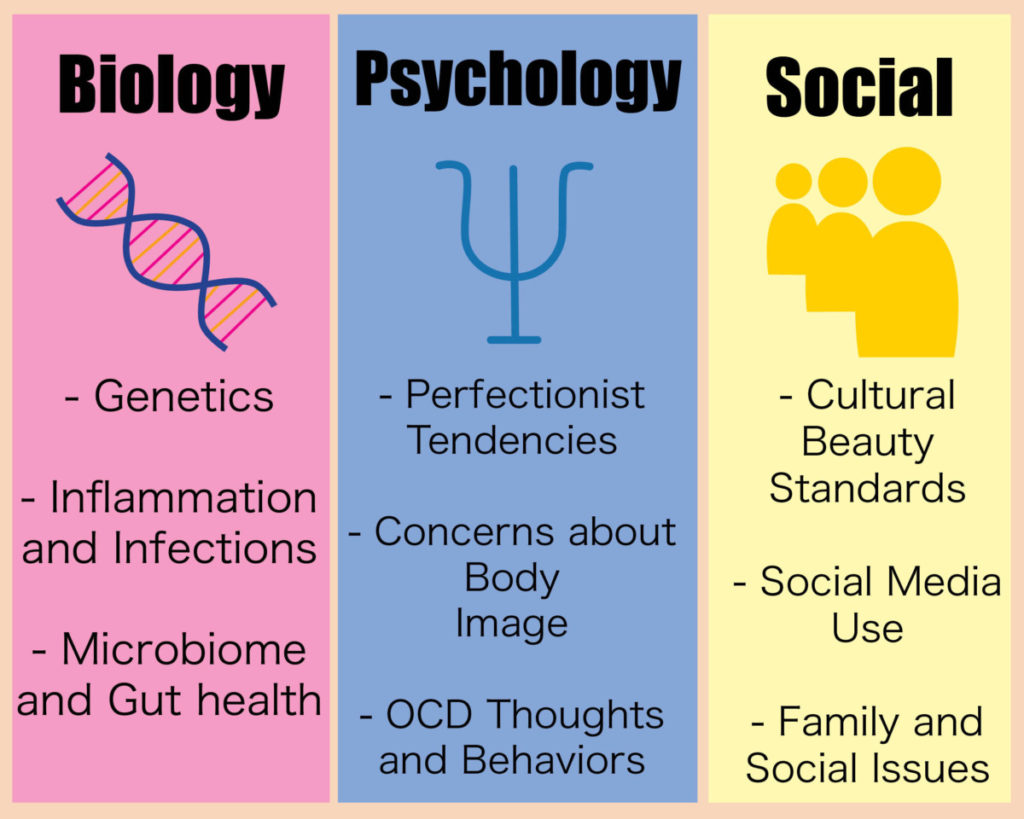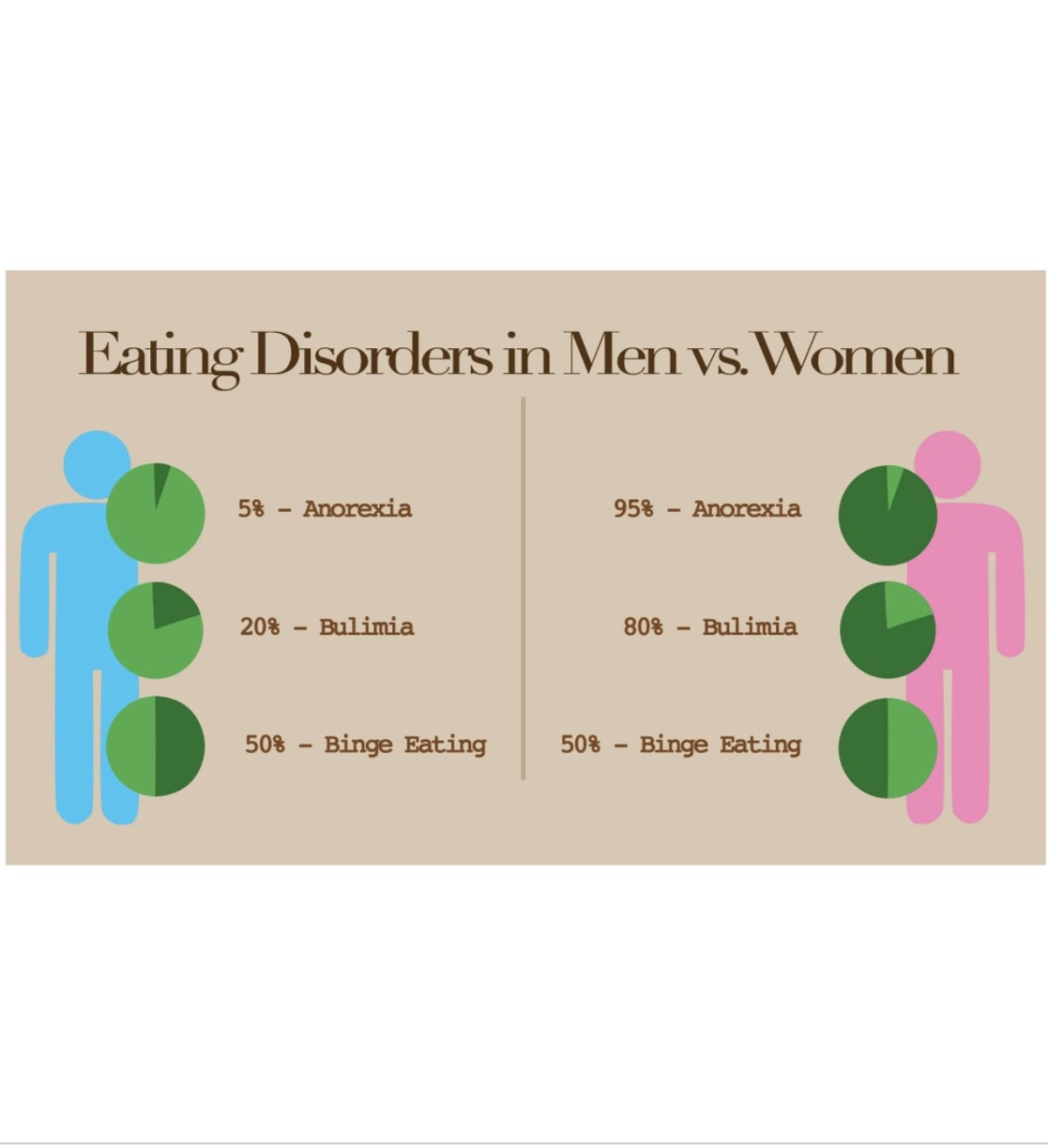Maeson Wagner
@mwagnercourant
It is time to address an issue that has long been stigmatized and therefore consciously ignored by the New Canaan community and the high school within it: eating disorders.
While the term eating disorder broadly encapsulates smaller diagnoses such as anorexia, bulimia and binge-eating, body dysmorphia is yet another food related disorder that is all too present among high school students.
There is a significant difference between body dysmorphia and eating disorders, “Both are mental health diagnoses, but body dysmorphia is related to obsessive-compulsive disorder, and therefore falls under the broader category of anxiety disorders,” high school Social Worker Rachel Hartong said.
“The main difference between eating disorders and body dysmorphia is that an eating disorder isn’t always about what a body looks like,” Hannah de Groot, a therapist specializing in eating disorders said, “Eating disorders don’t always occur because someone wants to change the way their body looks.”
Body dysmorphia tends to come from an individual’s view of themselves, “People with body dysmorphia tend to see their body as different than it actually is. This usually stems from low self-esteem and hate towards your body,” de Groot said.
Although eating disorders are caused by several different factors such as social media, relationships, body image issues and family problems, there are specific environments in which eating disorders are more prevalent. “Eating disorders can happen anywhere but I think they come up most in independent sports where the focus is on one athlete rather than the team as a whole,” Ms. de Groot said.
Perhaps the most common sport where student-athletes suffer from eating disorders at the high school are track and cross country. “Unlike any other sport this is all you, you control your destiny in it,” Girls’ Assistant Cross Country and Head Track Coach Jeffrey Brentson said.
“I am concerned about eating disorders in track and cross country, but I don’t have evidence of it a lot of the time,” Coach Brenston said, “Not many girls come forward and explicitly say that they are struggling with an eating disorder. When I see a significant weight loss in a short amount of time, I begin to really worry.”
While runners do not often approach Coach Brentson directly about their struggles, he does keep an eye out for certain behaviors. “Signs of body image issues include an obsession with running and doing high mileage,” Coach Brentson said, “High mileage is what causes weight loss because after a long period of running you start to burn only fat. Typically long distance runners have almost zero body fat and that’s clearly something that some girls are trying to achieve.”
Coach Brentson sometimes sees his athletes doing more than what he asks, raising another level of concern, “When we tell them to take breaks they keep running. It becomes obsessive and reaches a new level of intensity,” he said. “We tend to see a decrease in performance when individuals push those limits too far. Rather than being able to continue, they get run down and tired very easily.”
Although becoming obsessed with high mileage can be a warning sign of an eating disorder, it could also be a sign of a motivated runner, “It’s hard to discriminate between girls that are struggling with body image and those that just want to get really good at running, and they think more mileage is better,” Coach Brentson said.
As a result, a coach may have difficulty knowing whether or not athletes have healthy motives behind their training, “I know I have some very competitive and driven girls on the team, but they might be driven by body image as well. We don’t know unless girls share their struggles with us,” Brentson said.
When an athlete does decide to share their struggles with a coach, it can impact their training, “We can’t have any definite idea of what is going on unless someone shares and it’s a personal thing not often shared. If we have an athlete that decides to share, we do monitor the level of intensity of their training,” Brentson said, “I think some girls really love running but some will tend to abuse it.”
Even though eating disorders aren’t always talked about, Coach Brentson does make an effort to bring awareness to the issue, “It’s a delicate subject that we have to tread lightly with, but at the same time we try to make sure the girls know that restricting what you eat and running to lose fat isn’t a healthy way to go about losing weight or fitting a certain body image,” he said, “We try to preach on that pretty much every single day.”
Participating in a sport like track can be a single trigger among a compilation of other causes that leads to an eating disorder. One of these causes is usually trauma, “I think a lot of people underestimate trauma, it doesn’t always have to be a tragic event,” Ms. de Groot said, “For example we’re all experiencing trauma as we’re going through COVID.”
The coronavirus and the novel variant Omicron, have added another element of trauma during the holidays, “Family dynamics, travel complications and financial worries are all examples of stressors that are heightened at holiday time,” Ms. Hartong said, “Covid has added another layer to these stressors, such as with concerns about transmission at celebratory gatherings, or even not being able to be with loved ones at this time due to the virus.”
During and shortly after the holidays are the most common times for those with eating disorders to struggle and even relapse, “A significant amount of my patients struggle with relapses this time of year. They are usually triggered by pressure from family members,” Ms. de Groot said, “A lot of people with an eating disorder can point to family members making fun of their bodies and making comments about their weight.”
Ms. de Groot emphasizes that these family interactions worsen a person’s relationship with food, whether they have an eating disorder or not, “It’s not only harmful to those with eating disorders but also people in general. We often encourage those with eating disorders to set boundaries during the holidays and allow time for self-care,” she said.

While eating disorders and body dysmorphia are undoubtedly sensitive topics, it is important to bring awareness to them so those struggling are more willing to reach out for help. To do this, individuals should strive to overlook the stereotypes that imply that eating disorders only affect specific ages and ethnic groups. “The biggest misconception in the eating disorder world is that they only affect young, white girls.” Ms. de Groot said, “Statistics show that eating disorders heavily impact people of color, those in Latinx communities and men, who make up one in three eating disorders.”
The stereotype that eating disorders only affect one population is often an obstacle for those who are struggling, “People that don’t fit the demographic often don’t seek treatment because of the stigma that comes with it.” Ms. de Groot said.
However, at the high school, there are many resources readily available to those who are ready to reach out for help. “If a student is struggling with body dysmorphia, it’s important they reach out to their School Counselor, who can help support them in school and connect them to supports and resources in the community that specialize in treating this condition,” Ms. Hartong said, “Additional mental health resources at NCHS include two School Psychologists (Ms. Calcagni and Ms. Warkentin), two social workers (Ms. Donellan and Ms. Hartong), and the Teen Talk Counselor (Mr. Sloane) who are available to provide support and connections to community resources.”




